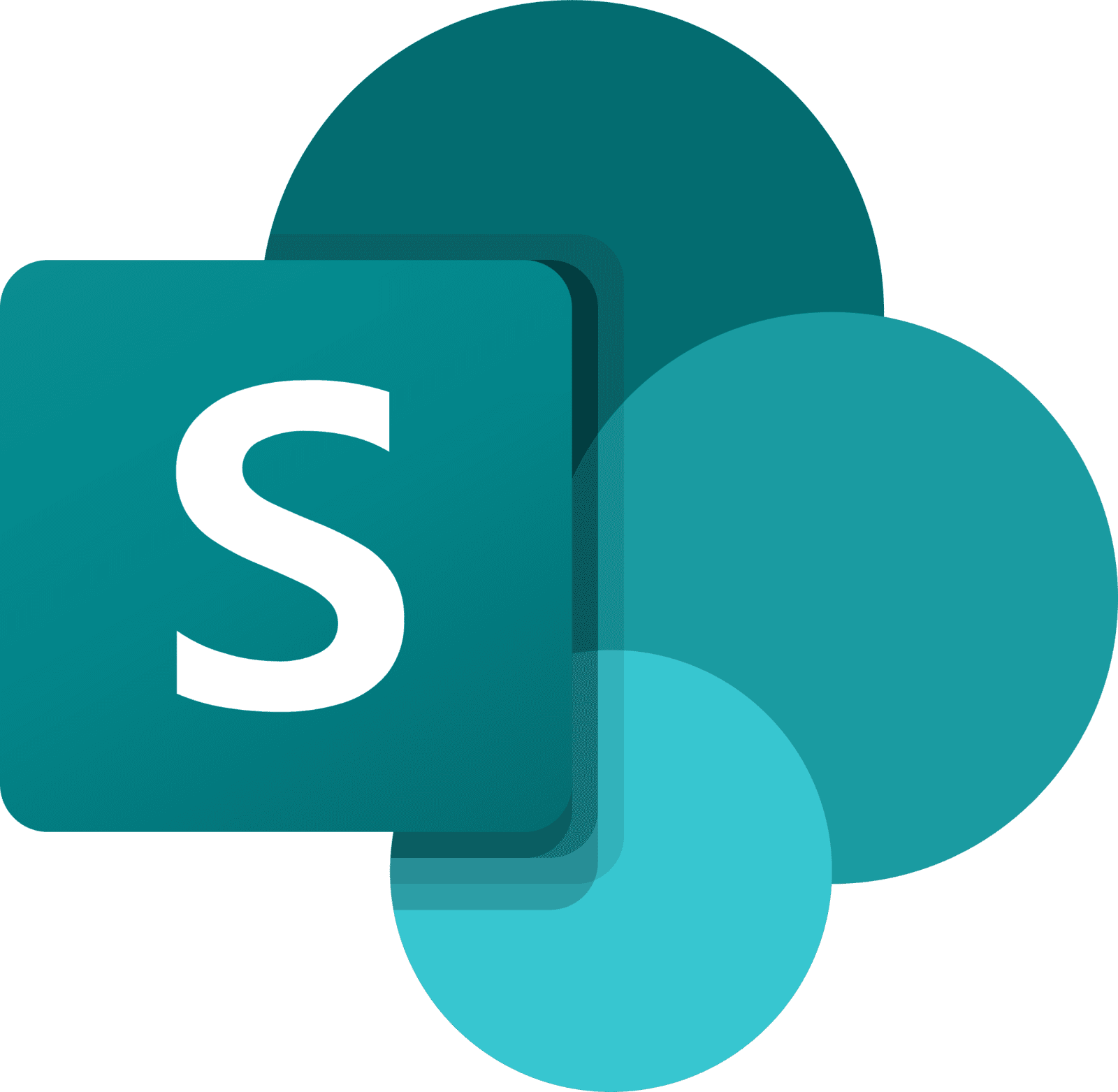What is SharePoint?
You will never realize the full potential of something if you don't understand its power. Often, we miss out on something amazing, not because we lack access to it, but because we have no idea of its value in our hands.
Over the past few months, we've been addressing frequently asked questions on our social media platforms, addressing common inquiries from both our existing and potential clients. While this has been going well, we've inadvertently overlooked something fundamental to our work: SharePoint!
Could it be that you don't recognize the value of partnering with GTconsult because you don’t see the potential of SharePoint? Or perhaps you're on board with SharePoint but aren't sure how to maximize its capabilities? This blog is tailored just for you, and GT is the company you need in your corner!
But before we dive into why GTconsult is your best choice, let's answer a crucial question: What is SharePoint?
Microsoft SharePoint is a versatile platform designed to help organizations enhance collaboration, streamline business processes, and effectively manage their content and information. SharePoint offers a wide array of features and capabilities to assist businesses and teams in creating, organizing, sharing, and managing information and resources efficiently.
The History of SharePoint
| Office Server Extensions (1999-2001) | Office Server Extensions were the earliest version of Microsoft's server software for collaboration and document management. They provided basic web-based collaboration features and were part of Microsoft's Office suite. |
| SharePoint Portal Server 2001 | Released in 2001, SharePoint Portal Server 2001 was the first dedicated SharePoint product. It focused on document management and search capabilities, allowing organizations to create a centralized portal for information sharing and collaboration. It was eventually replaced by newer versions. |
| SharePoint Team Services (2002-2003) | SharePoint Team Services were a free add-on to Windows Server 2003. It offered basic collaboration features like document libraries, lists, and web-based project management. It was discontinued with the release of Windows SharePoint Services 2.0. |
| Windows SharePoint Services 2.0 (2003) | Also known as WSS 2.0, this free add-on to Windows Server 2003 provided improved collaboration features compared to SharePoint Team Services. It was the foundation for the next versions of SharePoint. |
| SharePoint Portal Server 2003 | Released in 2003, this version improved on its predecessor by enhancing document management, search, and portal capabilities. It served as a platform for information and document management. |
| Windows SharePoint Services 3.0 (2007) | WSS 3.0, introduced alongside SharePoint Server 2007, provided enhanced collaboration features and integration with Microsoft Office. It was available for free and laid the foundation for subsequent versions. |
| Microsoft Office SharePoint Server (MOSS) 2007 | SharePoint Server 2007, also known as MOSS 2007, offered enterprise-level features for content management, business intelligence, and workflow automation. It marked a significant step forward in SharePoint's capabilities. |
| SharePoint Foundation 2010, SharePoint Server 2010, and SharePoint Enterprise 2010 | These versions were released in 2010. SharePoint Foundation was a free edition offering basic collaboration features. SharePoint Server 2010 added advanced functionality, and SharePoint Enterprise 2010 further extended it with features like business connectivity services, InfoPath Forms Services, and Excel Services. |
| SharePoint Foundation 2013, SharePoint Server 2013, and SharePoint Enterprise 2013 | Released in 2013, these versions continued the pattern established in 2010. SharePoint Foundation was free and provided basic features. SharePoint Server 2013 included advanced features, and SharePoint Enterprise 2013 added even more capabilities for large enterprises. |
| SharePoint Online (Plan 1 and 2) | SharePoint Online is part of Microsoft 365 (formerly Office 365) and offers cloud-based collaboration and document management services. Plan 1 and Plan 2 provide different feature sets and are available through subscription plans. |
| SharePoint Server 2016 and SharePoint Enterprise 2016 | Released in 2016, SharePoint Server 2016 brought hybrid cloud capabilities and improved performance. SharePoint Enterprise 2016 offered advanced features for organizations with specific needs. |
| SharePoint Server 2019 and SharePoint Enterprise 2019 | Released in 2019, these versions continued to improve on the previous offerings. SharePoint Server 2019 provided on-premises solutions with enhancements in security and user experience, while SharePoint Enterprise 2019 extended the feature set for enterprise customers. |
| SharePoint SE 2021 | SharePoint Server Subscription Edition marks the next phase in the evolution of SharePoint Server, designed specifically to address the requirements of on-premises customers. This release introduces a range of new features aimed at streamlining administration, bolstering security measures, and facilitating a smoother transition when upgrading from earlier versions of SharePoint Server. |
| SharePoint Premium 2023 | An advanced content management and experiences platform and the next evolution for Syntex. SharePoint Premium brings AI, automation, and added security to your content experiences, processing, and governance. With SharePoint Premium the services already released as part of Syntex, including SharePoint Advanced Management, will be transitioned to join the growing family of SharePoint services along with brand new content experiences. |
Key SharePoint Concepts
To better grasp SharePoint's functionality, let's use the analogy of a home.
Think of SharePoint as a home with a family living in it, where the members of your organization represent the members of that family.

You can edit text on your website by double clicking on a text box on your website. Alternatively, when you select a text box a settings menu will appear. your website by double clicking on a text box on your website. Alternatively, when you select a text box

Document Management
Just like in a home where we keep important and frequently used items such as birth certificates, passports, photo albums, pots, pans, and toothbrushes, SharePoint allows users to create, store, and manage documents in a centralized repository. It provides version control, document check-in/check-out, and co-authoring features to ensure that team members can collaborate on documents without conflicts.
Document Management in SharePoint
SharePoint provides powerful tools for document management. Users can upload, organize, and collaborate on documents with features like version control, co-authoring, and check-in/check-out.
Version Control
SharePoint automatically tracks changes made to documents, allowing users to view and revert to previous versions if needed. This is crucial for maintaining document integrity.
Co-Authoring
Multiple users can work on the same document simultaneously, and SharePoint ensures that changes don't conflict, making collaboration more efficient.
Check-In/Check-Out
This feature allows users to lock a document for editing, preventing others from making changes until it's checked back in. This is especially useful when you need to maintain document consistency.

Collaboration
Just as you can collaborate with other members in the household to get tasks done, teams can collaborate on documents, spreadsheets, presentations, and other content in real-time. SharePoint provides features like document sharing, comments, and task assignments to facilitate teamwork.
SharePoint is primarily known for its robust collaboration features, which facilitate teamwork and information sharing within an organization.
Discussion Boards
Discussion boards allow users to post and discuss topics or questions within a SharePoint site. They are useful for fostering communication and sharing ideas.
Announcements
Announcements are a way to broadcast important news and updates to site members. They appear prominently on the site's homepage.
Calendars
SharePoint offers shared calendars that can be used for scheduling events, meetings, and milestones. Users can easily view and add events to these calendars.
Shared Documents
Document libraries, as discussed earlier, are a central place for storing and collaborating on documents. They enable users to work on the same document simultaneously, track changes, and maintain version history.
Task Lists
Task lists can be used for creating and assigning tasks to team members. They help in tracking progress and ensuring that responsibilities are clear.
Sites
Not everyone has access to your home, it’s a private space only accessible to the members of the family. Sometimes, you may have guests over or even chat to someone in the front yard without them entering your home. SharePoint can be used to create intranet sites, which are internal websites for an organization, and extranet sites, which are accessible to external partners or customers. These sites can be customized to include news, announcements, and various web parts.

SharePoint sites are the building blocks of your collaboration environment. Think of them as dedicated spaces for teams, projects, or departments to work together, share information, and collaborate effectively. Each site is unique and can be customized to meet the specific needs of its users.
SharePoint offers different types of sites, including:
Team Sites
Designed for collaboration within a specific team or group. They are excellent for managing projects, sharing documents, and collaborating on tasks.
Communication Sites
More suitable for sharing information and news with a broader audience. They often include announcements, news posts, and other content for general consumption.
Site Hierarchy
SharePoint sites can be organized in a hierarchical structure, with top-level sites (usually used for the entire organization) and sub-sites (dedicated to specific teams or projects). This hierarchy helps manage and structure your SharePoint environment effectively.

Workflows
Much like the unique ways things are done in each home, SharePoint includes a workflow engine that allows organizations to automate and streamline business processes. Custom workflows can be created to automate tasks, approvals, and notifications.
SharePoint offers various tools for creating workflows:
Power Automate
SharePoint can integrate with Power Automate (formerly known as Flow), a powerful workflow automation platform. Users can build custom workflows to automate tasks, notifications, and data integration between SharePoint and other apps in the Microsoft 365 suite.
Approval Workflows
SharePoint allows you to create approval workflows, which can be used for tasks such as document approvals, leave requests, and expense reports. These workflows can send notifications to the relevant stakeholders and ensure that processes follow a predefined path.
Custom Workflows
You can create custom workflows tailored to your organization's specific needs. These workflows can be designed to trigger actions based on certain conditions or events within SharePoint.

Search
Who do you call at home if you can’t find something, let’s all say it together, “MOOOOOOMMMMMMM!” SharePoint has a powerful search engine that, much like mom, helps users find documents, sites, and information quickly. It supports features like content search, people search, and customizable search results.
SharePoint provides robust search capabilities to help users quickly find the information they need.
Enterprise Search
SharePoint's enterprise search feature enables users to search for documents, content, and data across the entire SharePoint environment. It uses advanced algorithms to deliver accurate search results.
Metadata and Tagging
Effective search relies on the use of metadata and tagging. SharePoint allows users to add metadata to documents, making it easier to categorize and find content. Tagging content with relevant keywords enhances search results.
Search Refinements
Users can refine their search results using filters, date ranges, and other criteria to pinpoint the exact information they're looking for.

Lists
Not every home had an organization board with cute sticky notes and the like. Maybe you are familiar with important tasks, to do lists or grocery lists being placed on the fridge. Well your lists in SharePoint are like that, but more organized…we hope.
Lists are collections of data organized in rows and columns, somewhat similar to spreadsheets. They help you manage various types of information and can be customized to suit your specific needs. Lists can be used for tasks, contacts, events, inventory, and more.
Common Types of Lists
Task Lists
Used for tracking tasks and their status within a project or team.
Contact Lists
Used for storing and managing contact information for team members, clients, or partners.
Calendar Lists
Used to schedule and keep track of events and appointments.
Libraries
Think of the cupboards, drawers in your home; there's a place for everything and for everything there is a place. This helps you find things easily, you're not looking for a spoon in the cutlery drawer or finding toiletries in the pantry.
Libraries in SharePoint are repositories where you store and manage your documents and files. They are essential for document management, version control, and collaboration. A library can be thought of as a digital filing cabinet.
Document Libraries
These are the most common types of libraries, used for storing documents such as Word files, PDFs, spreadsheets, and more.
List Libraries
Lists are used for managing data that isn't necessarily document-based, such as tasks, issues, contacts, or events.
Assets Libraries
These libraries are specialized for managing media files like images and videos.


Permissions
Not everyone can just waltz in and out of your home or different rooms in the home, sometimes you need access to enter someone’s room, maybe kids are not allowed in the office or perhaps access to the pantry is controlled. SharePoint offers robust security features, including role-based access control and permissions management.
Administrators can control who has access to specific content and what actions they can perform. Some of these permissions include:
User Permissions
SharePoint allows you to control who can access and interact with the content in your sites, libraries, and lists. It's essential to understand how permissions work to maintain data security and ensure that the right people have the right level of access.
Permission Levels
SharePoint offers predefined permission levels like "Read," "Edit," and "Full Control." These define what users can and cannot do within a site or library.
Groups
You can group users with similar permission needs into security groups, making it easier to manage permissions at scale.
Inheritance
SharePoint's permission structure follows an inheritance model, where permissions cascade from parent sites to child sites, libraries, and lists. Understanding this concept is key to managing permissions effectively.

Integration
Just as you use different appliances and equipment for various purposes in your home, SharePoint can be integrated with other Microsoft products like Microsoft Office, Teams, and OneDrive. It also supports integration with third-party applications and services.
Some Microsoft products it integrates with include:
Microsoft Teams
SharePoint integration with Microsoft Teams allows users to create Teams channels and access SharePoint content directly within the Teams interface. This promotes a unified collaboration experience.
OneDrive for Business
Users can sync SharePoint libraries with OneDrive for Business, making it easier to access, edit, and share documents from their local devices.
Outlook
SharePoint integration with Outlook enables users to access and share documents through email and calendar events.
Power BI
SharePoint integration with Power BI allows for powerful business intelligence and data visualization. Users can embed Power BI reports and dashboards directly within SharePoint sites.

Customization
Every home is different and reflects the style of its residents. Statement pieces, plant life, antiques, marble countertops, accent walls, you name it. SharePoint can be customized to meet the specific needs of an organization. Custom web parts, templates, and themes can be created to match the organization's branding and requirements. A landing page is one of our personal favourites which beautifully allows users to navigate your internet and company information from the very first SharePoint page.
SharePoint provides flexibility for tailoring sites to meet the unique needs of your organization.
Site Themes
You can choose from a variety of site themes or create custom ones to match your organization's branding.
Web Parts
SharePoint offers a range of web parts that can be added to site pages to display specific content or functionality. Examples include calendars, news feeds, and document libraries.
Site Templates
You can create custom site templates that include preconfigured settings, layouts, and web parts for specific use cases.
Power Apps and Power Automate
Advanced users can create custom apps and workflows using Power Apps and Power Automate to address unique business requirements.

Business Intelligence
Think of the smart features in a modern home. Just as these smart systems collect and analyze data on home temperature, security, and energy use to optimize comfort and efficiency, business intelligence tools collect and analyze data in a company to optimize operations, identify opportunities, and make informed decisions. SharePoint includes features for creating interactive dashboards and reports, making it a platform for business intelligence and data visualization.
SharePoint provides tools for data analysis and reporting, enabling organizations to make data-driven decisions.
Power BI Integration
SharePoint can host Power BI reports and dashboards, allowing users to create interactive data visualizations and share them with colleagues.
Excel Services
SharePoint integrates with Excel Services, enabling users to publish Excel spreadsheets and workbooks to SharePoint for easy access and data analysis.
PerformancePoint Services
This feature allows for creating business intelligence dashboards, scorecards, and key performance indicators (KPIs) to monitor and measure business performance.
Mobile Accessibility
With this one, we would be reaching if we tried to link the analogy. So, I guess that’s the only difference. You can’t take your home with you everywhere you go, but SharePoint is accessible on various devices and platforms, ensuring that users can access their content and collaborate from anywhere. And don’t forget to check out our Info Mailers that push the most relevant content to the right people in each department at the right time.
SharePoint is designed to be accessible on mobile devices, making it convenient for users to collaborate on the go.
Mobile Apps
SharePoint offers mobile apps for iOS and Android, providing a user-friendly interface for accessing and interacting with SharePoint content on smartphones and tablets.
Responsive Design
SharePoint sites are designed with responsive layouts, ensuring that they adapt to different screen sizes and orientations.
Offline Access
Some SharePoint content can be made available offline, allowing users to continue working on documents even when they're not connected to the internet.
Security
SharePoint's mobile apps are equipped with security features, including data encryption and access controls, to protect sensitive information on mobile devices.

- How to use SharePoint
- SharePoint intranets
- SharePoint site examples
- Knowledge base in SharePoint
- Power Apps in SharePoint
Keep reading

SharePoint Online: The Upgrade Your Business Needs

Upgrading SharePoint 2016 to SharePoint 2019 step-by-step

6 Easy Steps for an Office 365 Tenant to Tenant Migration
Keep Reading

SharePoint Migration Checklist

Migrate SharePoint with GTconsult’s A Team

CCI Case Study

